|
December 16, 2003
Good heavens. I have only just discovered Soul Food Cafe. (Thanks to Bonyton) What a fine site. What an innovative use of the internet to developing the historical becoming of Australian culture.
Finding such sites is like following trails through the desert of cyberspace with other weblogs providing a series of maps of the country:
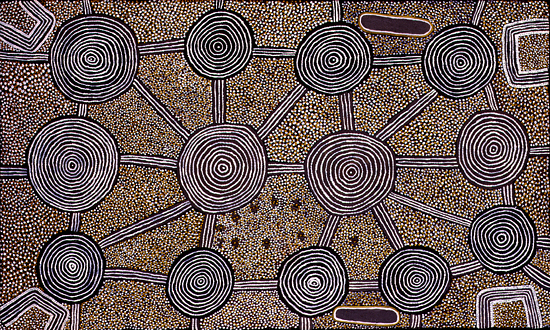
John TjapaltjarriThe Tingari at Pantjantjanya, 1993
Then perchance, coming across soakages in the sand hill country, or a waterhole along a trail:
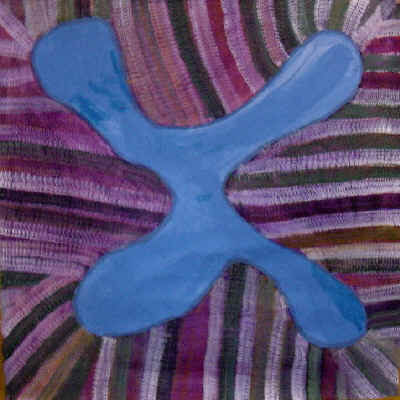
Barney Ellega, Waterhole Dreaming
Soul Food cafe is one such waterhole. Do take time out to replenish there. That is what waterholes are for---soul food. Many a time I've wandered the trails at night looking for a watering hole that pointed the way to the promised land.
Around the waterhole we sit under the night sky and reflect about the country, express our feelings about what is happening on this earth, and start telling our stories.
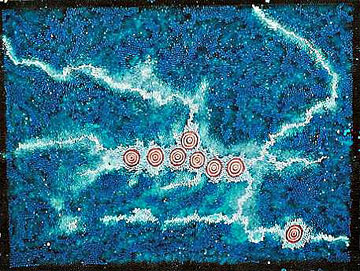
Gabriella Possum Nungurrayi, Milky Way Dreaming, 2000
What we find is that a big story of colonial conquest criss crosses many of the trails we walk. We whites in postcolonial Australia are still haunted by the ghosts of our past:
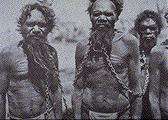 Many Australians are still caught up in, and are currently reflecting on, the significance of our misguided assimilation policy that attempted to govern Australia's indigenous people by merging one of the world's oldest living cultures into the 200 year old mainstream Australian society. It was a policy underpinned by Social Darwinism, white supremacy and primitivism. Many Australians are still caught up in, and are currently reflecting on, the significance of our misguided assimilation policy that attempted to govern Australia's indigenous people by merging one of the world's oldest living cultures into the 200 year old mainstream Australian society. It was a policy underpinned by Social Darwinism, white supremacy and primitivism.
The national narrative says that Aboriginal people were not consulted in this process, as it was only the 1960s that they won rights as citizens. So Australia's history was one of nearly 200 years of western (British) occupation of the traditional homelands of indigenous people. It was a very unhappy time, a time of wrenching social turmoil and intense suffering.
So Aboriginal people decided that they needed a means of defining themselves to the seemingly hostile and ignorant white society that threatened their cultural survival. So they started telling their stories:
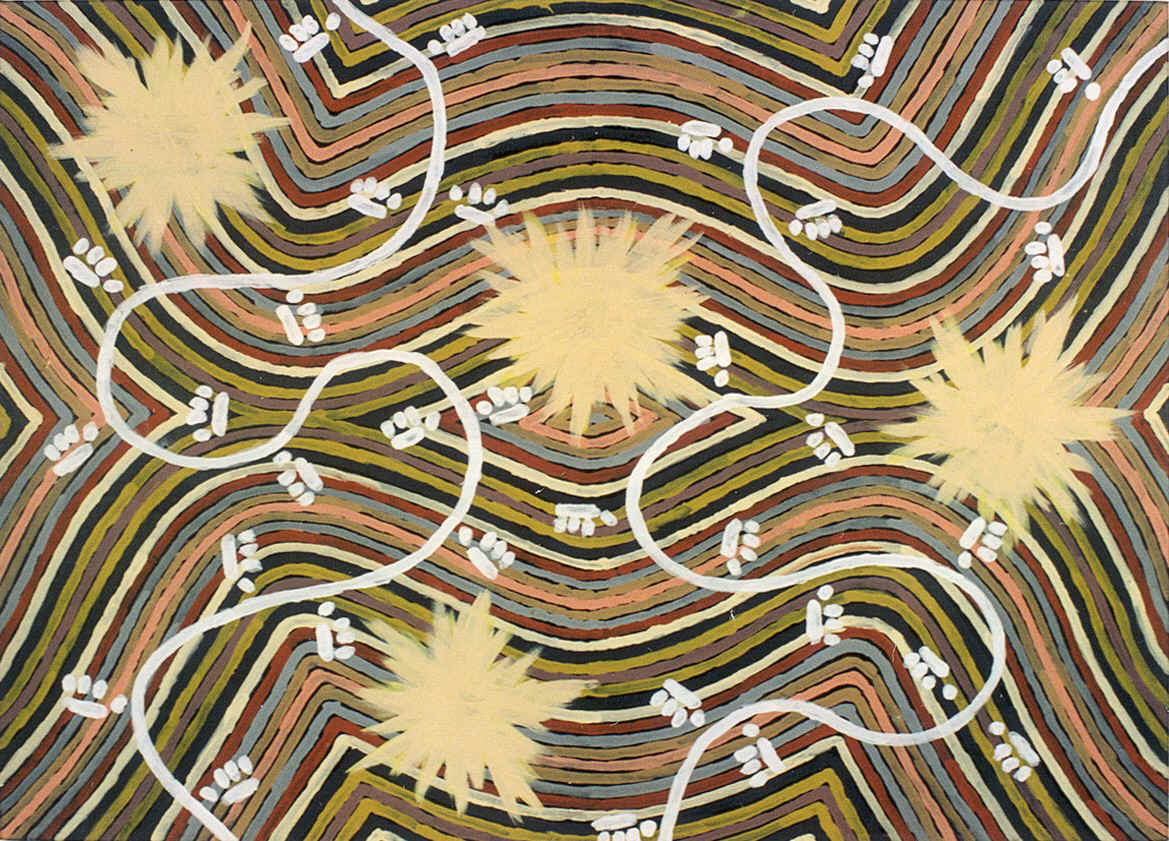
Clifford Possum, Possum Dreaming, 1995
By the 1980s paintings from Papunya Tula in the western desert were seen by the art institution as the archetypal Australian Aboriginal contemporary art. Aboriginal art from the desert became increasingly accepted as mainstream Australian contemporary art.After this kind of artwork from the western desert no longer could the primitive be separated from the civilized.
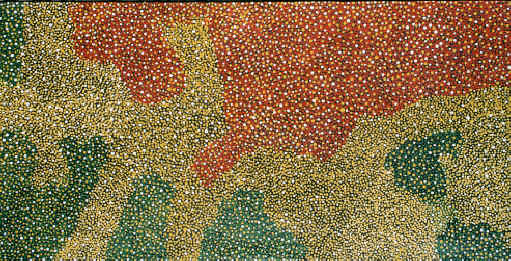
Josie Petrick KemarreBush Tucker Bush Berry, 1999.
As we engage with, and consume this "bush tucker" at a watering hole on a lightly marked cybertrail, we need to remember that this art arose from the violent colonial encounter, and is produced by a culture resolutely opposed to the grand narrative of White Australia that lauds European civilization. Our white culture has all but forgotten how the romantic European avant garde once celebrated the primitive; they believed in the supremacy and purity of archaic art. What white Australian culture once rejected, it now celebrates and markets overseas as "the [authentic] primitive" in Australian culture.
Alas, what once was "primitive" in Australian culture has now become "modern". The dot, which once applied as a background to symbols representing specific stories of the Dreamtime, becomes dot abstraction.
And me? I've lost my way in the trails of the sand country in the Corrong. I left my view camera there by a soak, along with my imagination. I'm trying to find my way back there via a detour though the arid lands of philosophy. I feel that I've lost my way in a foreign country that many call the bad lands; meaning a landscape with little in the way of nourishment. Few philosophers know how to tell stories around water holes. Most have no idea of country.
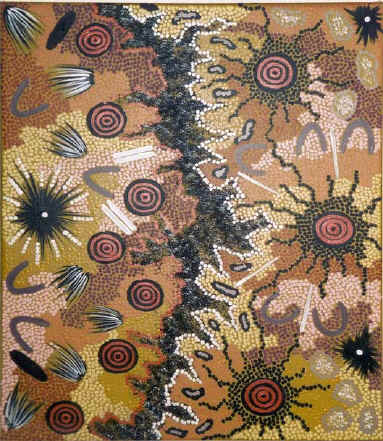
Gabriella Possum Nungurrayi, Grandmothers Country, 2002.
I'm in need some maps to guide my way back to the water holes on the trail that lead to my river country.
|

I've always appreciated visiting this blog, it is one of my regular reads. The added bonus is that you often point me in other wonderful directions, such as the Soul Food Cafe! Thank you!